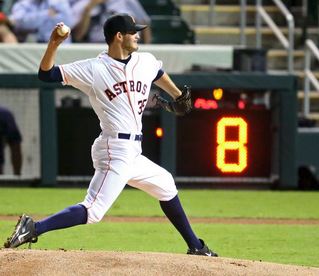Podcast: Play in new window | Download
Subscribe: RSS
As you may have noticed, I do not write many stories about major league baseball on this site.
I like baseball. I started playing in the fifth grade and continued through junior high school. Though I was a reliable hitter, defense (just like in basketball) became a liability once I was moved to the outfield.
If you ask anyone who wears glasses while playing sports, playing outfield under the lights in a night game is a big challenge.
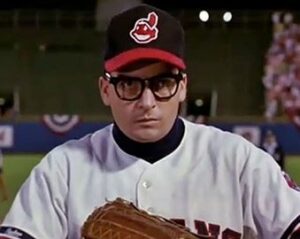
Once that white baseball gets launched into the sky under the bright white lights required for a night game, it is hard to find it quickly. This can become a very nervous moment for a bespectacled outfielder. Due to the glare of the lights, every fly ball becomes another adventure. Let’s just say that I was always happy when the baseball was hit to someone else in the outfield during a night game.
A baseball game remains a terrific place to spend some quality time with your family and friends.
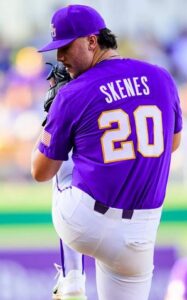
I usually prefer to follow college baseball during the spring (especially LSU games).
The men’s College World Series in Omaha and the Women’s Softball World Series in Oklahoma City are both incredibly entertaining events to watch during early June.
By August, it is usually time to pay more attention to major league baseball as the playoff races start to get serious.
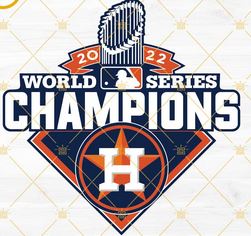
This spring, Major League Baseball deserves a little more of our attention. In 2023, MLB has finally implemented a few significant changes to their game. Traditionally, baseball has been very slow to adopt significant adjustments. Decreasing attendance and lagging television ratings sparked a major overhaul to the sport.
According the MLB website, there are three major rule changes which have been implemented which fans need to become familiar with:
- Pitch Timer – This rule change is one which most of us have wanted for the past few decades. There is a 30 second maximum between each batter. Once the batter settles in, the pitcher has 15 seconds to deliver the ball (if no runners are on base). If someone is on base, the pitcher an additional 5 seconds (20 seconds) to make the throw to home plate. The pitcher also gets two so-called “disengagements”. That can be used for a pick-off attempt or stepping off the mound for any other reason. The batter may only step out of the box and call one time-out per plate appearance, too.
- Shift Restrictions – If you haven’t noticed over the past few years, more and more teams have been shifting their infielders and outfielders to overcompensate if a batter tends to hit the ball toward the left or right side of the field most of the time. This year, a new rule was adopted which effectively requires defenders to remain in their traditional positions. Gone are the days of seeing three defensive players shift to the same side of the infield or outfield and leave gaping holes on the field.
- Bigger bases! If no one had mentioned this change, I doubt most of us fans would have noticed. After trying this concept in the minor leagues, MLB is acknowledging that there have been more injuries as the players (and their feet) have grown larger over the years. The slightly bigger first, second, and third base has meant about a three inch reduction in the distance between home plate and this new “behemoth” first base bag. There is a microscopic 4 ½ inch reduction in the running distance between first and second base (90 feet from the center of each bag). The same dimensions are in play from second base to third, too.
These changes had been tested within the minor league baseball systems prior to implementation at the Major League Baseball level this season. Let’s review how well these adjustments are working.
The pitch clock timer has been an overwhelming success. Baseball games have been criticized by most fans for taking too long. In 2023, the average game times have dropped by 25 minutes during April.
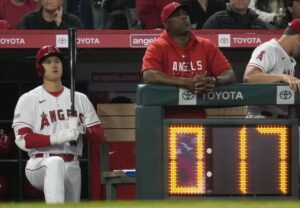
Specifically, the average Major League Baseball game took 3 hours and 3 minutes last season. It is now down to 2 hours and 38 minutes this year. That is a 13% reduction. MLB game times are now their shortest since 1984.
One interesting complaint about the speedier games has come from concession stand vendors. There has been a decrease in sales with less time to sell food and beverage products this season.
Related to the pitch clock timer, the larger bases may be a contributing factor to an uptick in stolen bases in 2023.

For the record, it is still 90 feet from first to second base. With the bases being slightly larger, though, the base runners have gained a microscopic ½ % shorter distance to run.
Most players believe that the increase in stolen bases this year is related to the decreased number of throws coming from pitchers over to first base. The decrease in the number of pick-off attempts at first base is due to the new limits on pitcher “disengagements”. Base runners do not have to endure countless pick-off attempts anymore. They now feel more confident to take a chance to steal second base.
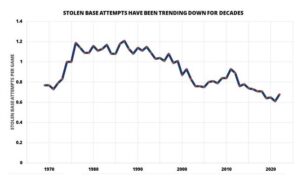
Major League Baseball must be pleased by the results seen in 2023.
The current increase in attempted stolen bases projected to be the highest number in more than ten years. More action on the field helps to keep fans more engaged at the stadium and for those watching via television.
That brings us to changes related to the new prohibition of defensive “shifts”.
MLB believes this improves the likelihood of more balls being put into play and more infield and outfield hits. The league believes the change will showcase the athletic prowess of MLB players to make more difficult defensive plays from the players’ natural positions on the field of play.
Though I may I disagree with this particular change, it is easy to see why it happened.
Visualize a right handed batter hitting the baseball toward the left side of the infield or outfield the majority of time when he makes contact with the bat. In recent years, MLB teams have started to move the third baseman toward the left field line, the shortstop toward the traditional third base position, and the second baseman all the way over to the left side of the infield.
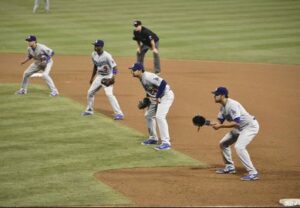
The outfielders would shift positions, too. They would move further to the left side of the outfield based on the statistical probability that the batter (generally) will not drive the ball toward the right side of the field.
These defensive shifts were leaving a gaping hole on one side of the infield and in the outfield.
The batter must execute a difficult swing modification in order to exploit this defensive overshift. It is difficult to “time” a baseball swing with a 100 mph fastball coming at you.
This was made worse in recent years after MLB hitters were instructed by their managers to swing for the fences on nearly every at bat.
This is a very specific example of analytics being used by sports teams and having a negative effect on the sport for its fans.
The offensive statistics led baseball managers to encourage batters to try to hit a home run on most swings rather than trying to get any type of base hit. With that swing mentality, recent years have yielded a surge in the number of strikeouts from batters.
Home baseball fans do not like to see their favorite players striking out two or three times per game.
The recent “swing for the fence” mentality in baseball mirrors why basketball teams have begun to take so many three point shots in recent years, too. Even with a lower conversion rate, the statistics confirm that the results are generally more effective for the team.

Bomb’s away!
In response to baseball’s long-ball offensive mentality, the defenses quickly adapted. They began to implement an exaggerated shift. Most of today’s hitters lacked the required bat control to take advantage of massive defensive overshifts. The batter had become statistically unlikely to hit the baseball toward the wide open side of the baseball field.
The defense has been increasingly winning this chess match. This led to fewer runs being scored and a bad look (increased strikeouts) for the home team’s batters.
Major League Baseball took a bold step by implementing these changes. They deserve credit for taking risks.
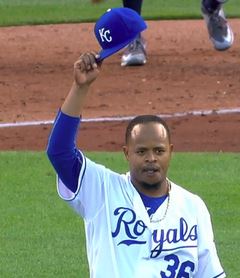
The league is actively attempting to increase fan satisfaction with shorter baseball games and more runs being scored. After the first month of play in April, it appears that the changes have generally succeeded.
The players and baseball fans are beginning to grow more accustomed to the adjustments.
Through the first month of the 2023 season, MLB attendance is up nearly 5% over 2022. Perhaps the novelty of these seeing these changes in person is driving much of the renewed interest in baseball.
In 2023, Major League Baseball will happily accept any and all positive trends!

